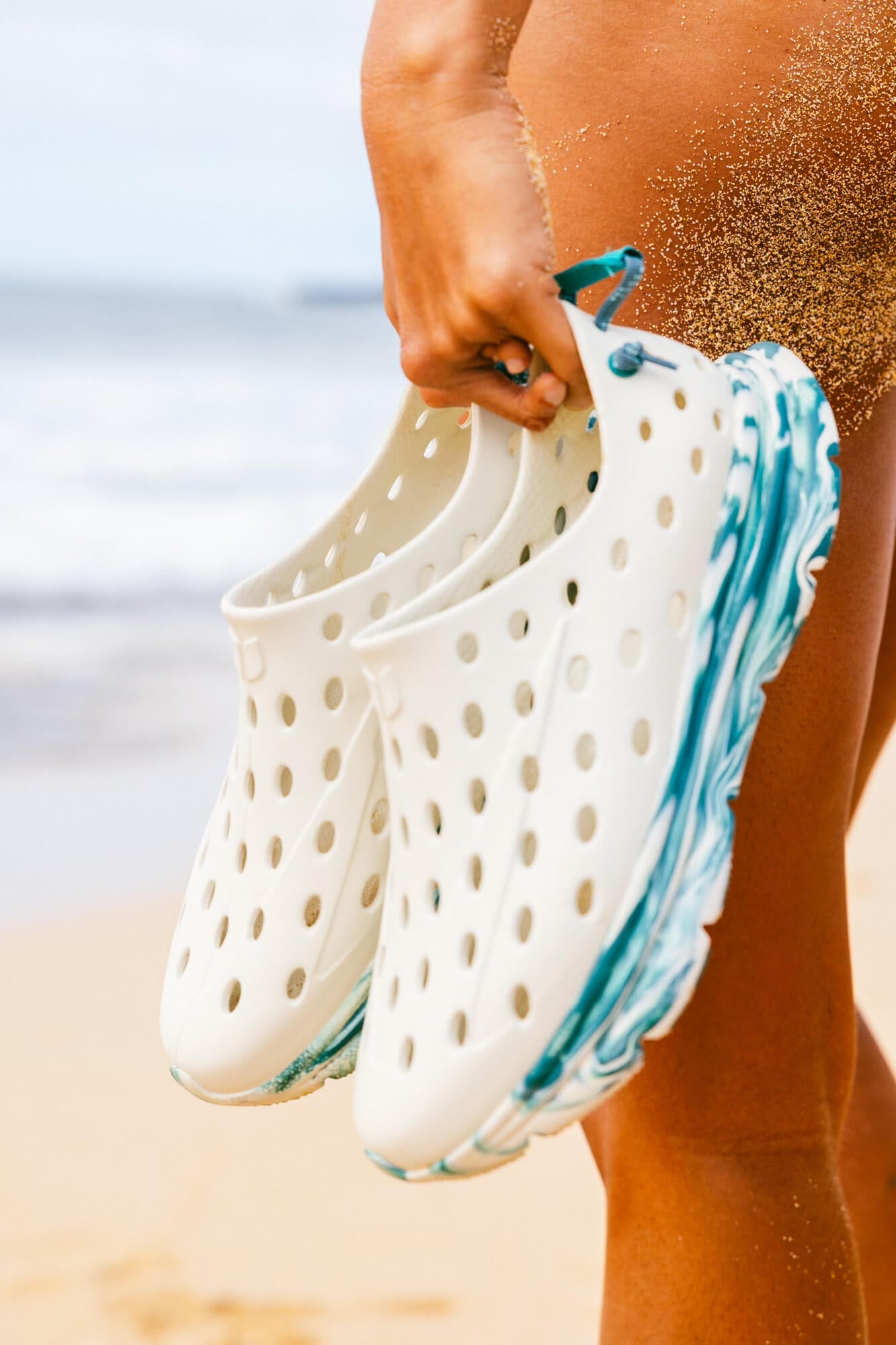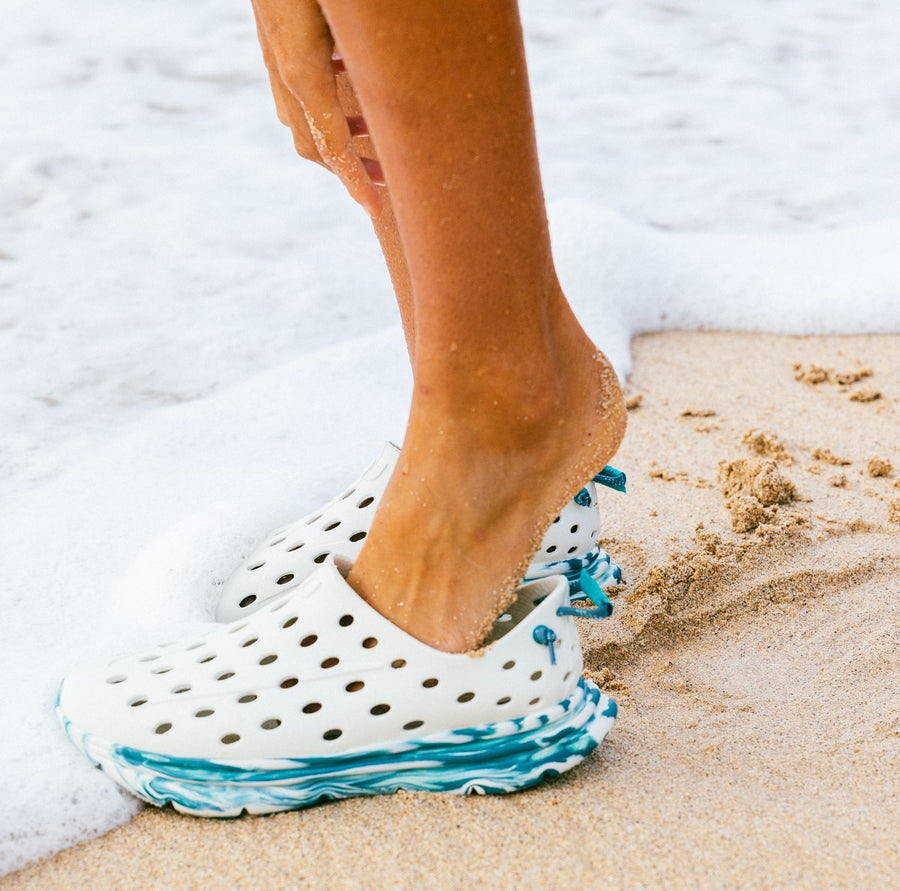SHOES FOR BALL OF FOOT PAIN (METATARSALGIA)
Suffering from ball of foot pain, called metatarsalgia, can significantly impact daily activities and mobility. Whether caused by high-impact activities, ill-fitting footwear, or certain foot conditions, finding the right shoes is essential for managing and alleviating discomfort in the metatarsal area.
Delve into the world of footwear best suited to address metatarsalgia and explore the key features and styles that offer relief and support for those with ball-of-foot pain. From cushioned inserts to specialized footwear options, we'll uncover the best solutions to help you stay comfortably on your feet.
Wear shoes with these features for metatarsalgia
Metatarsalgia is a common condition involving pain and inflammation in the ball of the foot, specifically where the toes meet the feet in the metatarsophalangeal joints. (Think of them as your toe knuckles.)
The best shoe style for alleviating ball of foot pain typically incorporates several key features. Here are some important factors to consider when choosing metatarsalgia shoes:
1. Cushioning
Adequate forefoot cushioning and underfoot cushioning are crucial for reducing pressure on the metatarsal heads and the weight-bearing bones in the balls of the feet. Look for shoes with exceptional cushioning in the forefoot region (whether built-in or removable insoles) to provide shock absorption and enhance comfort while walking or standing.
2. Metatarsal support
Shoes with built-in metatarsal pads or bars offer targeted support to the metatarsal bones. These features help distribute weight more evenly across the feet and alleviate pressure. These supportive features can help reduce discomfort and prevent aggravation of metatarsalgia symptoms.
3. Roomy toe box
A wide toe box allows the toes to spread out naturally and reduces crowding in the forefoot area. This extra room helps to minimize pressure on the metatarsal heads. It provides space for any swelling or deformities, such as bunions or hammertoes, which can contribute to metatarsalgia.
4. Low heel or no heel
Shoes with a low heel or no heel at all help minimize pressure on the forefoot and promote a more stable and comfortable position. High heels can shift the body's weight forward, increasing pressure on the ball of the foot and exacerbating metatarsalgia symptoms.
Choosing comfortable shoes with a low-profile heel or a completely flat sole can help reduce strain on the forefoot.
5. Flexible sole
A flexible sole allows for natural foot movement and prevents excessive bending or strain on the metatarsal area. Look for shoes with a sole that bends easily at the forefoot, allowing for smooth and comfortable walking motion without placing undue stress on the ball of the foot.
6. Adjustable straps or laces
Shoes with adjustable straps or laces allow wearers to customize the fit according to their foot shape and size. This ensures proper support and comfort for the ball of the foot and prevents rubbing that could exacerbate pain or discomfort.
7. Supportive arch
While arch support may not directly target the ball of the foot, it plays a crucial role in maintaining proper foot alignment and reducing overall foot fatigue (especially if you have flat feet or a high arch). Shoes with good arch support help distribute pressure evenly across the foot and prevent excessive strain on the ball, indirectly alleviating metatarsalgia symptoms.
If you experience pain in the ball of the foot, try on different shoe styles and brands to find the best fit. A healthcare professional, such as a podiatrist or orthopedic specialist, can effectively provide personalized recommendations and guidance for managing metatarsalgia.
The best shoe styles for ball of foot pain
Styles that often incorporate these features include athletic shoes designed for walking or training, running shoes, shoes with cushioned insoles, and certain sandals with supportive footbeds that accommodate a range of foot shapes.
Recovery shoes can be a good option for those experiencing ball of foot pain. They’re designed to provide cushioning, support, and comfort for the feet after high-impact activities and can also help alleviate pain in the ball of the foot.
However, for more persistent or severe ball of foot pain, such as from conditions like metatarsalgia, you may need shoes specifically designed for that purpose rather than just general recovery shoes.
The key is finding shoes, whether recovery or not, that provide ample cushioning, support, and stability in the forefoot area to reduce stress and pressure on the metatarsal region. For example, wearing shoes with a narrow toe box will likely exacerbate your symptoms (especially if you have wide feet).
Ultimately, the best shoe for ball of foot pain will depend on individual preferences, foot anatomy, and the specific cause of the discomfort. Try on different styles and brands to find shoes that offer the right combination of support, cushioning, and comfort for your needs.
Discover Kane Recovery Shoes!
Kane Revive shoes offer excellent support, comfort, and durability for those needing top-notch recuperative footwear. These kicks come with all the right features to assist you during your rehabilitation journey, featuring an adjustable hook-and-loop single-strap synthetic upper, plush TPR footbed, and durable injected EVA outsole.
Aside from providing quality products, they are also committed to sustainability, having made plans to become a B Corp while dedicating 1% of their overall profits towards environmental charities.
When and how to wear Kane Revive
The best time to wear a recovery shoe is directly after strenuous activities such as running or exercising. This helps minimize inflammation and launch the healing process. To guarantee maximum comfort and effective recuperation, make sure you are wearing your recovery footwear correctly by tying up laces securely for a snug fit.
Causes of ball of foot pain
The foot comprises over 100 muscles, tendons, and ligaments, 33 joints, and 26 bones. Various factors can cause ball of foot pain, including:
- Intense physical activity and high-impact sports like running, jumping, and dancing that put excessive stress on the metatarsal bones
- Structural foot abnormalities like high arches, longer second toe, hammertoes, and bunions that lead to uneven weight distribution
- Wearing improper footwear, such as high heels, shoes that are too tight or too loose, and lack of arch support and cushioning
- Age-related thinning of the protective fat pad that cushions the metatarsal heads
- Certain medical conditions like arthritis, nerve entrapment (Morton's neuroma), and inflammatory disorders can cause pain in the ball of the foot
- Overweight or obesity that increases pressure and stress on the metatarsal region
- Posture problems and gait abnormalities that lead to excessive loading on the ball of the foot
How to treat ball of foot pain
Treating ball of foot pain typically involves a combination of self-care measures, lifestyle modifications, and medical interventions.
Try these strategies to help alleviate ball of foot pain:
Rest and reduce activity
Avoid high-impact activities that put excessive stress on the ball of the foot. Take a break from standing and walking as much as possible to allow the area to heal.
Wear supportive footwear and orthotics
Choose shoes with ample cushioning, good arch support, and a wide toe box to reduce pressure on the ball of the foot. Avoid high heels, narrow shoes, and shoes with thin soles that can exacerbate metatarsalgia.
Use metatarsal pads or custom orthotics for extra support and to redistribute pressure.
Apply ice and use anti-inflammatory medication
Apply ice packs to the affected area for 15 to 20 minutes several times a day to reduce inflammation, especially after activities that aggravate the pain. Take over-the-counter anti-inflammatory drugs like ibuprofen to help manage pain and swelling.
Stretch and strengthen the feet
Do exercises and stretches to improve flexibility and stability in the feet and lower legs. (See below for some ideas.)
Manage underlying conditions
If an underlying issue, such as arthritis or nerve problems, is causing pain in the ball of the foot, treat the root cause.
Seek medical treatment if pain persists
See a podiatrist or foot specialist if home treatments do not provide relief within a few weeks. They may recommend treatments like injections or even surgery in severe cases.
When to see a doctor for ball of foot pain
While you can often manage ball of foot pain at home, seek medical attention if the pain is severe, persistent, or accompanied by concerning symptoms. Seeing a doctor can help identify the underlying cause and provide appropriate treatment.
You should see a healthcare professional for ball of foot pain in the following situations:
The pain is persistent and severe
If the pain is severe or persistent and does not improve within two weeks of trying home treatments, it's a good idea to talk to a healthcare professional.
The pain keeps coming back
If the pain is getting worse or keeps coming back, even after trying self-care measures, it's a sign that something else might be going on.
You’re experiencing other sensations
If you experience tingling, numbness, or burning sensations in the ball of the foot or toes, you should talk to a doctor or foot specialist.
You have an underlying condition
If you have an underlying medical condition, such as diabetes, that could be affecting your feet, see a healthcare professional.
You have injuries to the area
If you have visible bruising, swelling, or an open wound on the foot that does not improve within two to five days, you should seek professional advice.
You can't walk
If you cannot walk or put weight on the affected foot, see a healthcare professional to rule out strains, sprains, or stress fractures.
Frequently asked questions
What is the best shoe for ball of foot pain?
The best shoes for ball of foot pain should have the following features:
- Ample cushioning and the ability to absorb shock, especially in the forefoot area, to reduce impact and pressure on the five metatarsal bones
- Rocker-sole designs that promote a smooth, rolling motion and prevent excessive bending at the toe joints
- Firm arch support and a deep heel cup to properly align the feet and distribute weight evenly
- A wide, spacious toe box that allows the toes to spread naturally and reduces the risk of foot problems
- Breathable, lightweight, and flexible upper materials to minimize friction and irritation
- Durable outsoles with good traction to prevent slipping and further aggravation of metatarsalgia
What helps with pain in the balls of the feet?
Metatarsalgia is a painful condition. Fortunately, several remedies can help alleviate discomfort in the falls of the feet and improve your quality of life.
One effective method is to choose shoes with ample cushioning and support, particularly in the forefoot area. Look for styles with cushioned insoles, metatarsal support, and a wide toe box to reduce pressure on the metatarsal head and allow your toes to spread out naturally.
You can also consider using metatarsal pads or bars to redistribute weight and relieve pressure on the affected area.
Maintaining an optimal weight, practicing good posture, and incorporating stretching exercises for the feet and calves can also help reduce strain and prevent further discomfort.
If you still have pain despite these measures, consult a healthcare professional for personalized advice and treatment options tailored to your needs.
What are some stretches to relieve ball of foot pain?
Try these four stretches targeting the toes, plantar fascia, Achilles tendon, and calf muscles—all areas that can contribute to ball of foot pain when tight or inflexible:
1. Toe extension stretch:
- Sit straight in a chair, with the feet flat on the floor
- Place the left foot on the right thigh
- Use your fingers to pull and stretch the big toe up, down, and to the side, holding each position for five seconds
- Repeat 10 times, then switch to the other foot
2. Plantar fascia stretch:
- Sit in a chair and place a rolled-up towel under the ball of the affected foot
- Push your knee over the toes, feeling a stretch in the arch and calf
- Hold for 30 seconds, then repeat on the other foot
3. Achilles tendon stretch:
- Face a wall and place your hands on it at shoulder height
- Step one foot back, keeping the knee straight and heel on the ground
- Bend the front knee and lean forward, feeling a stretch in the calf and Achilles tendon
- Hold for 30 seconds, then switch legs
4. Calf stretch:
- Sit on the floor with your legs straight out
- Loop a towel around the balls of your feet and gently pull the toes towards you, feeling a stretch in the calves
- Hold for 30 seconds, then repeat five to 10 times
What does it mean when the ball of your foot hurts?
Pain in the ball of your foot can indicate underlying issues that may affect your mobility. This discomfort can stem from several factors, such as wearing ill-fitting shoes, overuse during high-impact activities, or certain foot conditions.
When the ball of your foot hurts, it typically suggests excessive pressure or inflammation in the area where the metatarsal bones meet the toes. This pain can result from repetitive stress, inadequate support, or structural abnormalities in the foot.
The pain may manifest as a dull ache, burning sensation, or sharp discomfort, especially when walking, standing, or bearing weight on the affected foot. Ignoring this discomfort can exacerbate the issue and lead to further complications.
It's best to immediately address ball of foot pain by identifying its root cause and implementing appropriate measures to help ease discomfort and prevent it from returning.
Consulting a healthcare professional, such as a podiatrist or orthopedic specialist, can help diagnose the underlying condition and recommend the best treatment.
Are sandals good for metatarsalgia?
While sandals can be a good choice for everyday wear and light activities, they must have the right supportive features to address metatarsalgia pain effectively. Look for these types of sandals if you’re experiencing ball of foot pain:
- Sandals with ample cushioning and shock absorption in the forefoot area help absorb impact and reduce pressure on the metatarsals
- Sandals with rocker-sole designs that promote a smooth, rolling motion can help prevent excessive bending and stress at the toe joints
- Sandals with solid arch support and a deep heel cup help properly align the feet and evenly distribute weight
- A wide, roomy toe box allows more room for the toes to spread naturally
For more active, high-impact activities (especially on hard surfaces), traditional hiking shoes or boots may be better than sandals for managing metatarsalgia.





















